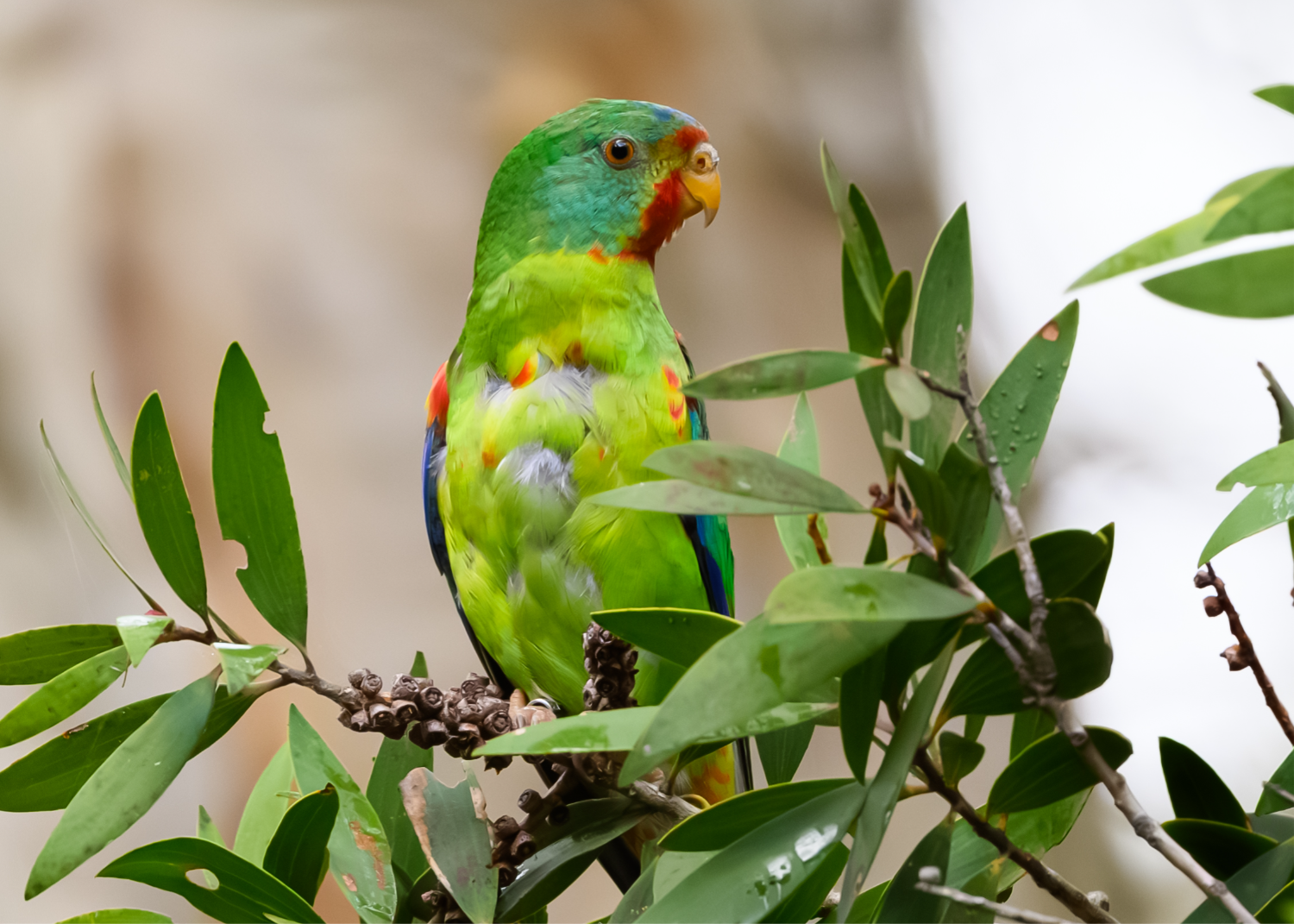Swift Parrot found in Forster
Published on 13 May 2024

FAWNA, BirdLife Australia and MidCoast Council have worked closely together to look after a critically endangered swift parrot and release it back into the wild.
From a population of over 2,600 birds in 1988, new research has revealed that there may be as few as 500 swift parrots left in the wild. Scientists fear the species may become extinct by 2031 unless action is taken to reverse the recent decline. This special bird breeds in Tasmania before migrating across Bass Strait to the Australian mainland over Autumn and Winter. This is the longest migration of any parrot in the world.
Unfortunately, the long journey for one of these parrots was temporarily interrupted in Forster. Fortunately, the injured bird was found and handed in to a local vet by a concerned local on the 22 April.
“The bird was injured and was unable to fly. It needed expert care before it was well enough to return to the wild,” said Rob Kyte from BirdLife Australia. Fortunately, that care was provided by experienced local FAWNA wildlife carers, Gail Whitwell and Rejane Chapman.
Once the bird was strong enough, the search for an appropriate site for release began with assistance from Council.
“We spent quite a bit of time looking for a swift parrot flock to release it with. Unfortunately, the small number of birds in the population meant that we were unable to locate the birds’ flock.”
“The swift parrot was released near Bungwahl. The area contained abundant flowering paperbarks and swamp mahogany trees, which are known to be important food sources. The release site was chosen to give it the best chance to find its flock again,” said Mr Kyte.
One of the FAWNA carers, Gail Whitwell said “This is a fantastic outcome for everyone. Every bird counts when it comes to saving a critically endangered species.”
“We called the bird Tay Tay because the flying distance of this little bird is comparable to the journey of the famous singer when she was in Australia” said Mrs Whitwell.
Mobile threatened birds like swift parrots, regent honeyeaters and glossy black-cockatoos can sometimes find their way into backyards if the right habitat is available.
Council plays an important role in helping save native wildlife by working with other agencies to alert the community about protecting the natural environment. This includes promoting the role of backyards. Council’s Backyards for Biodiversity program aims to alert the community about the little things that everyone can do in their own backyard to provide much-needed habitat for local fauna.
“You can help make your backyard more wildlife friendly by planting native species, including a mixture of ground cover, shrubs and larger trees,” said MidCoast Council’s Senior Ecologist, Mat Bell.
“If you can, it’s also great to include a water source for native animals to have a drink or a splash by including a birdbath or pond.”
“It is also important to be a responsible pet owner by keeping your dogs and cats in their yard as they are a big threat to native animals,” said Mr Bell.
Council recognises the valuable role that volunteer wildlife carers such as FAWNA, play in caring for native animals like Tay Tay.
For more information about how to create a wildlife friendly garden and the Backyard for Biodiversity program, please visit: https://www.midcoast.nsw.gov.au/Community/Our-environment/Protecting-our-vegetation-and-wildlife/Backyards-for-Biodiversity
Photo credit: Peter Goonan